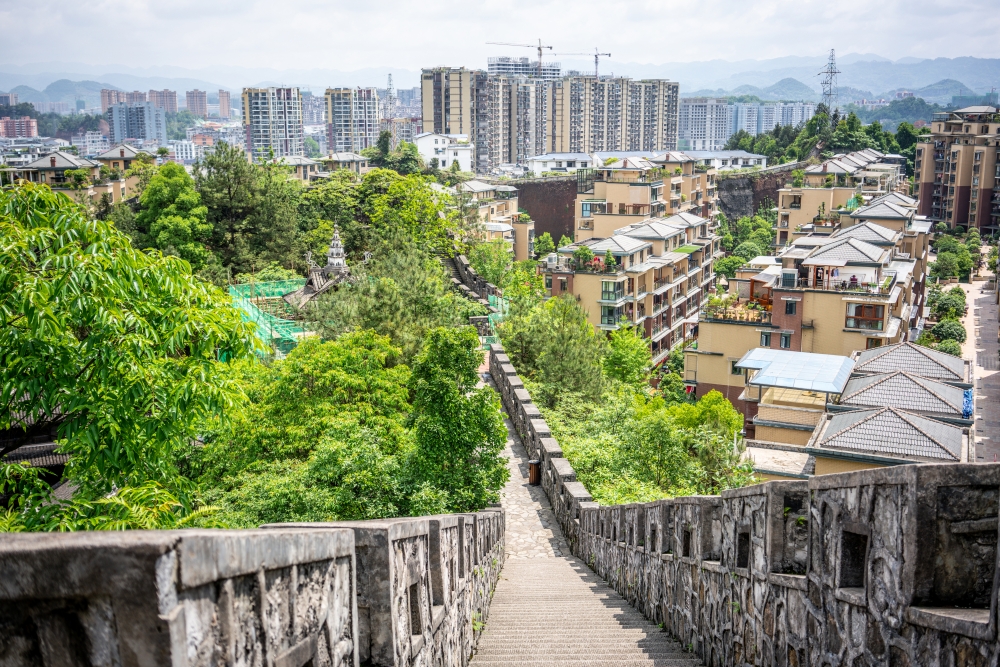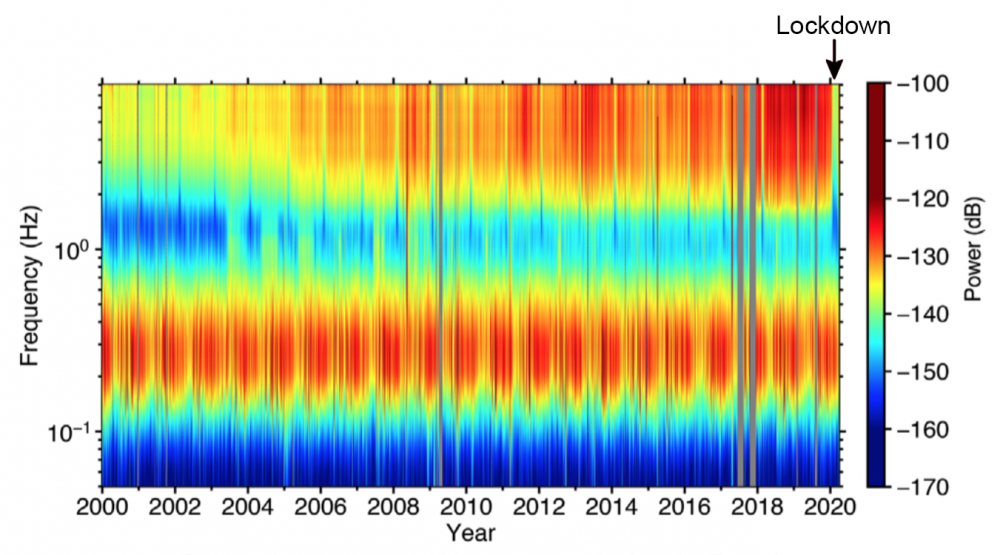Listening for Lockdown
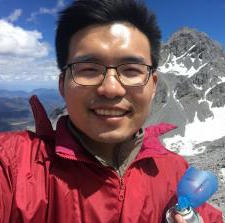
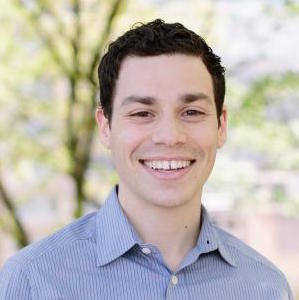
With their ears metaphorically to the ground, seismologists can detect a great number of phenomena aside from just earthquakes. That said, they often disregard sounds above the frequency of 1 Hertz. It’s generally a mixture of motorways, industry, rail and other human activities, not the Earth processes that tend to pique their curiosity.
However, UC Santa Barbara geophysics doctoral student Han Xiao saw a diamond in these dregs one day, as noise levels plummeted in Enshi, China, following the institution of a COVID-19-related lockdown.
Recalled coauthor Zach Eilon, an assistant professor in the Department of Earth Science, “During our group meeting just before the university locked down, Han came in and said, ‘guys, I’m not going to show the stuff I’ve been working on for the last two years. I took a look at this data, and look what it shows.’”
“Basically we were just open-mouthed,” Eilon said, recalling the group’s reaction to the precipitous drop in seismic noise.
Along with UCSB professors Chen Ji and Toshiro Tanimoto, he urged Xiao put aside his previous research and devote himself to a new study. Xiao’s analysis, co-authored by Ji and Tanimoto, appears in Seismology Research Letters.
Xiao had been interested in the rise in anthropogenic noise in China over the past 20 years, which appeared to correlate with local gross domestic product (GDP). Although he had considered it intriguing, the seismologist didn’t know quite how to explore the phenomenon further.
“I was just curious if we can see the lockdown effect on the seismogram,” Xiao said. “It was pretty interesting that we could find some relationship between the GDP and human noise. So I kept looking at this seismic station. After a long time, I checked it again and found the sudden decrease of the noise energy.”
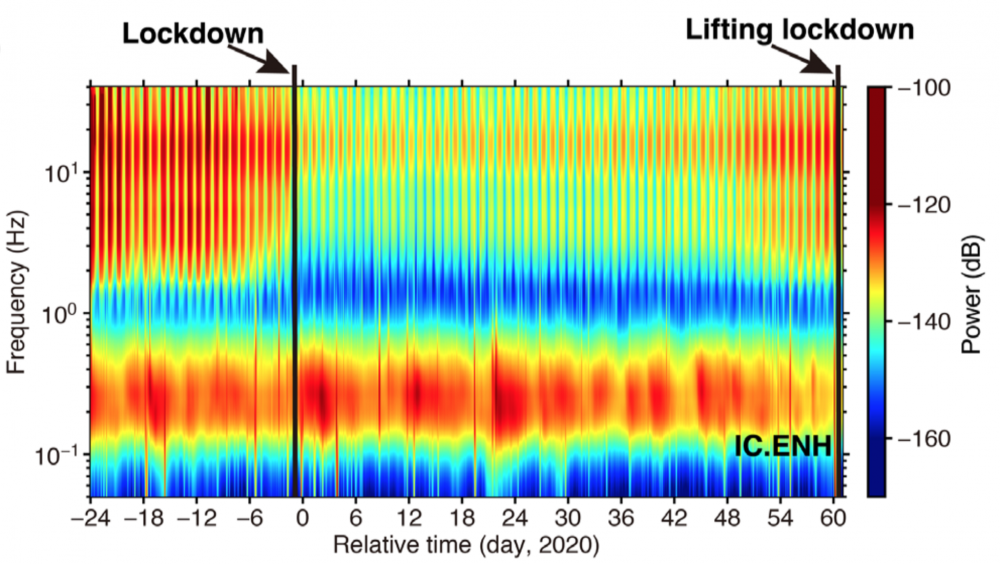
Anthropogenic noise suddenly dropped off as Enshi enters lockdown and began gradually increasing about a week before restrictions lift.
Photo Credit: HAN XIAO
Enshi had just gone into lockdown, and the results were dramatic. Anthropogenic noise quickly dropped by 12 decibels to levels not seen in decades. “It was equivalent to the abrupt cessation of roughly 20 years’ worth of urbanization and development activity,” the authors wrote. What’s more, noise began increasing seven weeks later, suggesting that Enshi started to gradually reopen around two weeks before the official lift of the lockdown.
The case was similar for other quarantined cities that Xiao checked, such as Wuhan. Even in Bejing, which hadn’t instituted a formal lockdown, he could still see a clear decrease in anthropogenic noise, a proxy for economic output.
He decided to look at seismic data from Italy, which was also instituting measures to control the pandemic. He analyzed data from seismic stations in Milan, Torino and outside Rome. Just from the data, he could tell that “although it was one of the toughest responses implemented outside of China, Italy’s lockdown policy was less strict than China,” Xiao wrote.
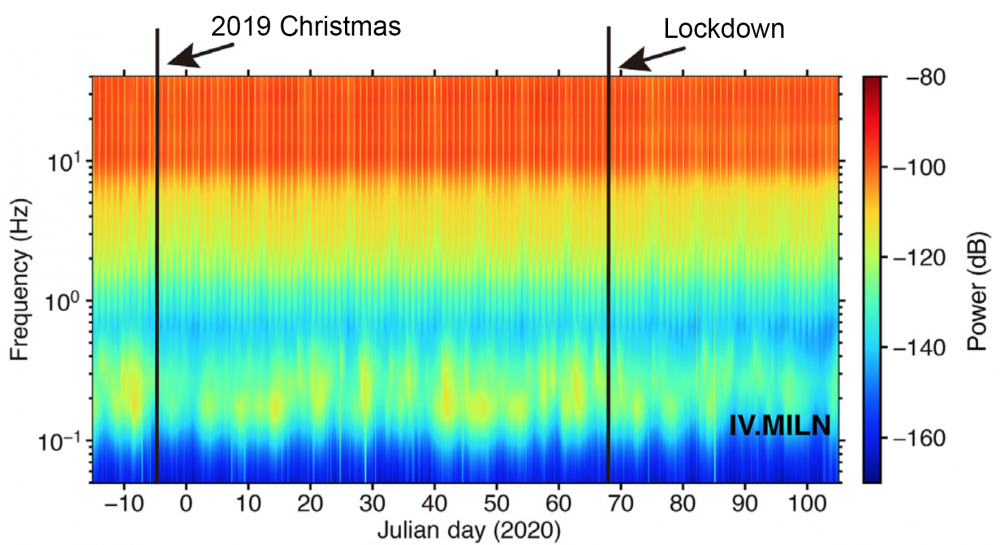
Seismic data from Milan remained relatively stable throughout the quarantine.
Photo Credit: HAN XIAO
The absence of a dramatic decrease made sense in context, since, unlike in China, the Italian cities continued running their public transit systems. “This seems to corroborate the inference that the primary noise source was public transportation,” Xiao wrote, “which was not impacted by the lockdown.”
The signals from Milan also showed a strong periodicity, in contrast to the data from Enshi. This represents the weekends, Eilon explained, and suggests that activity in the Chinese city doesn’t differ markedly between weekdays and weekends.
“This isn’t the main result of the paper, but it’s an incredibly powerful illustration of just how rich and sensitive the seismic noise dataset is for describing societal behavior and societal activity,” Eilon said.
The team later applied this technique to seismic data from New York City. “There’s no departure from normal until mid-March,” said Eilon, “and by Mid-March we already knew something was going on.”
“We can watch over the next two-and-a-half weeks as New Yorkers took this more and more seriously, as measured by this noise,” he concluded.
A new field
Scientists have just realized they can see the effect of the pandemic on daily life and economic output using seismometers. They can watch it slow as regions go into lockdown and they can see it ramp back up as restrictions lift. They can even see differences between different lockdown strategies, as well as whether people are abiding by various restrictions.
“The big surprise is that we can monitor people’s activities just using the seismic noise,” Xiao said. “And we can monitor a pretty large area just using one seismometer.”
This paper is only the beginning of research on the correlation between societal activity and low frequency sound. “Han was one of the very first people, really anywhere, to notice this particular relationship,” said Eilon. The researchers are now part of a grassroots collaboration of seismologists around the world that just published a big summary paper in Science describing these lockdown trends across different countries.
Xiao has already begun to hear from sociologists interested in his work, and has given them access to his code as well as the raw data. He has also begun testing a mini seismometer to see whether several of the stations could help monitor activity on campus.
The team sees a lot of promise in seismic monitoring. “This paper demonstrates that seismic noise is a very good way to monitor people’s activity,” said Xiao, “especially because it is 100% anonymized.”
Eilon agrees. “This is a new opportunity with a lot of people newly looking at this problem,” he said. Most of the researchers collaborating on the synthesis paper aren’t anthropogenic seismic noise specialists. They’re seismologists who study the Earth. And they’re just beginning to understand the applications for this tool they’ve started using.
“It’s hard to predict where an entire, new, burgeoning subset of a scientific field will go,” Eilon acknowledged. “But suddenly there’s huge new interest in thinking about all of the ways in which this could move further.”
